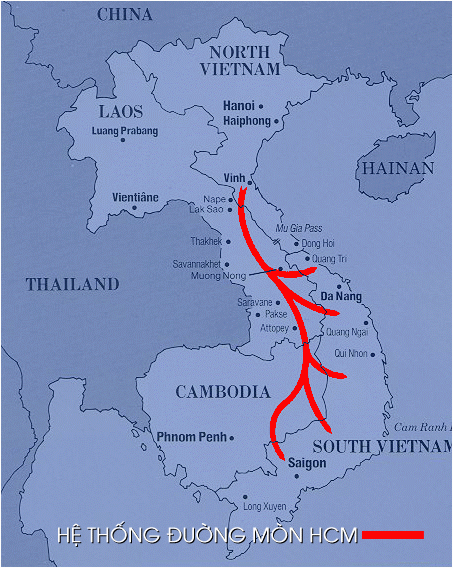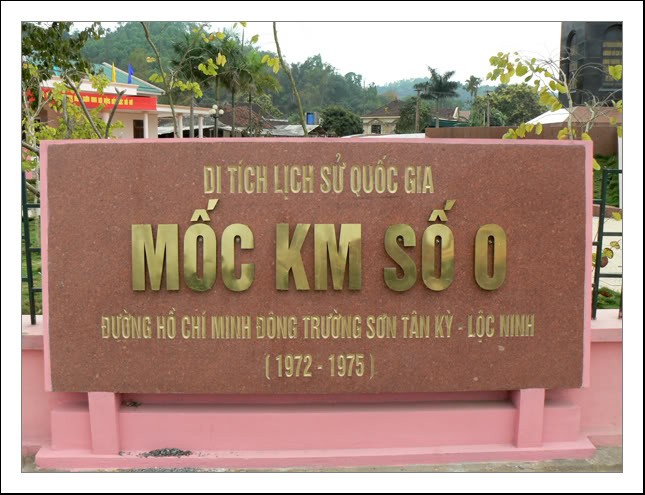(VOVworld) – On May 19, 1959, the Politburo of the Vietnamese Communist Party and the Central Military Party Committee conceived a military transport axis along the Truong Son mountain range, to be called the Ho Chi Minh Trail. For years after it was completed, the road served to transport supplies to the southern front. The trails’ starting point is in Lat village, Tan Ky district, Nghe An province and is marked by the milestone "Kilometer Zero".
On November 27, 1972, when the resistance war against US imperialism was in full swing, the soldiers of Battalion 559 began to build a road to refuel the southern front to prepare the historic Ho Chi Minh campaign for the liberation of the south and national reunification. The route is part of the legendary Ho Chi Minh Trail. But it was a road for trucks connecting Lat village in Nghe An province to Loc Ninh district in Binh Phuoc province.
 |
According to Major General Vo So, Head of the Political Department of Battalion 559, also known as the Truong Son Battalion, who was personally involved in the construction of this road, said in the beginning only 500 soldiers were assigned to build this road. Later they received help from tens of thousands of sappers, volunteers and local residents. They moved thousands of cubic meters of earth and built dozens of bridges to create a secret route to transport personnel and millions of tons of food and ammunition to the southern front. So said:“At that time, Lat village was still isolated because it is a mountain village. Taking advantage of that, we secretly transported people and goods on trucks to the southern front. Soldiers accepted the job of delivering supplies to the south with honor and responsibility. Soldiers gathered at Kilometer Zero to go to the south. They were soldiers from the South who had regrouped in the north. More than anyone else, they wanted to return to fight in the south to liberate the country. They were all very happy”.
The 17,000 km axis had five horizontal cross roads and 21 roads connecting the areas east and west of the Truong Son mountain range. Major General Ngo So said:
"This road helped to broaden the legendary Ho Chi Minh trail. Former Party General Secretary Le Duan said the Ho Chi Minh trail will go down in history as a decisive factor in the liberation of the south and national reunification but also also serve national development after the war."
On this route, the Vietnamese army managed to transport to the south nearly 455 million tons of food, arms and ammunition and nearly 58 million tons of fuel contributing to the victory of the spring offensive in 1975.
 |
After the war, the Ho Chi Minh Trail was improved. Today, it has become an important road connecting the northern and southern regions of Vietnam and contributing to national industrialization and modernization. In 1989, the Ho Chi Minh Trail was upgraded to the national standard. On 27 April 1990, kilometer zero was added to the list of national historical relics. Kilometer Zero was repaired and a 600 square meters museum was built to house memorabilia of the war. The site attracts crowds of Vietnamese and foreign tourists. According to Colonel Ngan Chai, Director of the Ho Chi Minh Trail Museum, a monument will soon be built at the site to honor fallen soldiers."Kilometer zero is now an official historical vestige. We have paid special attention to promoting its historical value. With the help of the state, a restoration was undertaken to make this a tourist site. It is a place to teach younger generations about our national traditions, the resistance war against the US imperialists and the sacrifices of the Truong Son soldiers".
The legendary Ho Chi Minh Trail is a symbol of the will of the Vietnamese people to fight for independence and freedom and is now also a major transnational highway that serves national construction and defense.